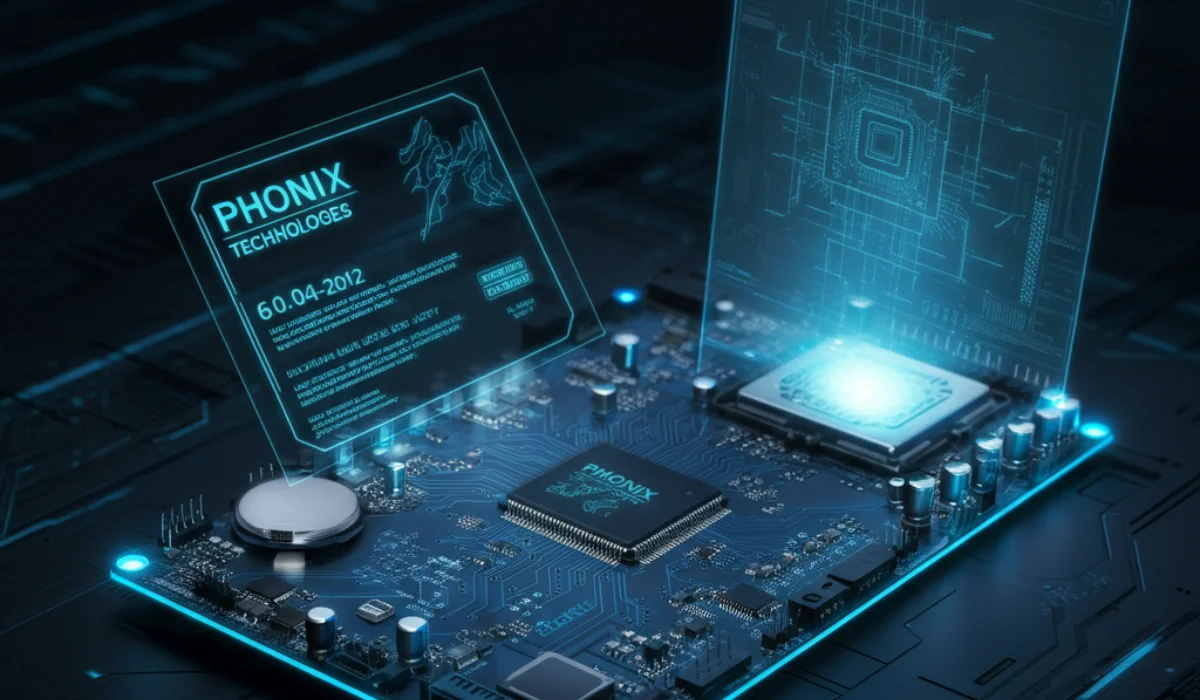In the fast-paced world of computing, the BIOS (Basic Input/Output System) plays a crucial role in ensuring seamless communication between hardware and software. As a pioneer in BIOS development, Phoenix Technologies has consistently pushed the boundaries of firmware innovation. One of its most significant contributions came on October 4, 2012, with the release of Phoenix BIOS 6.00PG. This version introduced groundbreaking enhancements that transformed pre-boot environments, elevated hardware compatibility, and optimized system performance.
This comprehensive article delves into the significance of Phoenix BIOS 6.00PG, its pioneering features, lasting impact, and its continued relevance in modern computing. Spanning over 1500 words, this detailed exploration aims to highlight how this release set new benchmarks in BIOS technology.
Understanding Phoenix Technologies 6.00PG
Phoenix BIOS 6.00PG is much more than just firmware—it acts as an essential bridge between a computer’s hardware and its operating system. Released during a period of rapid advancements in hardware technology, this version was designed to address the growing need for robust firmware solutions. Beyond just initializing and testing hardware components before loading the OS, Phoenix 6.00PG introduced critical innovations that paved the way for future BIOS and UEFI advancements.
Key Features of Phoenix Technologies 6.00PG
Phoenix BIOS 6.00PG introduced a host of improvements, ensuring optimal functionality, security, and ease of use. Below are its most noteworthy features:
1. Advanced Security Enhancements
Security has always been a critical concern in BIOS development, and Phoenix BIOS 6.00PG took significant steps to strengthen system defenses. This version introduced:
- Enhanced authentication mechanisms to prevent unauthorized access to the BIOS setup utility.
- Improved encryption protocols to protect the integrity of the boot process and system files from malware threats.
- Stronger password protection to prevent unauthorized configuration changes.
2. Expanded Hardware Support
To accommodate the rapidly evolving hardware landscape, Phoenix BIOS 6.00PG was designed to support:
- Next-generation processors and chipsets, ensuring compatibility with the latest Intel and AMD architectures.
- High-speed RAM technologies, allowing for better memory management and improved multitasking capabilities.
- Advanced GPU integration, optimizing graphics performance for gaming, content creation, and professional applications.
3. User-Friendly BIOS Interface
Recognizing the importance of accessibility, Phoenix Technologies redesigned the BIOS setup utility, offering:
- Intuitive navigation menus, making it easier for users to configure system settings.
- Simplified configuration options, reducing the complexity of adjusting boot sequences and hardware preferences.
- Context-sensitive help features, providing real-time explanations for BIOS settings.
4. Faster Boot and Recovery Mechanisms
Phoenix BIOS 6.00PG significantly reduced boot times and introduced efficient recovery options, including:
- Streamlined boot sequences, cutting down startup delays and improving system responsiveness.
- Integrated recovery tools, helping users troubleshoot and restore system functionality in case of errors.
5. Customization and Optimization
This version empowered users and Original Equipment Manufacturers (OEMs) by allowing:
- Performance tuning, enabling overclocking and power efficiency adjustments.
- Custom BIOS branding, offering OEMs the ability to personalize firmware.
- Specialized configurations, catering to niche applications such as industrial computing and gaming rigs.
The Impact of Phoenix BIOS 6.00PG on Computing
1. Standardization of the Boot Process
Phoenix BIOS 6.00PG contributed significantly to standardizing BIOS operations, ensuring seamless compatibility across various hardware configurations. This standardization benefited software developers and hardware manufacturers alike, leading to more stable and efficient computing environments.
2. Driving Modern Hardware Innovations
By supporting next-gen processors, memory, and GPUs, Phoenix BIOS 6.00PG enabled the development of high-performance systems. These advancements were particularly beneficial in fields such as gaming, multimedia production, and enterprise computing.
3. Laying the Foundation for Future BIOS Innovations
The improvements introduced in Phoenix BIOS 6.00PG influenced the development of future BIOS versions and UEFI (Unified Extensible Firmware Interface) technology. Key aspects such as security enhancements, UI redesigns, and hardware compatibility set the stage for next-generation firmware advancements.
4. Enhanced System Stability and Reliability
With improved hardware compatibility and refined boot processes, Phoenix BIOS 6.00PG minimized system crashes and reduced hardware conflicts. This led to a more reliable computing experience for both personal and enterprise users.
Phoenix Technologies 6.00PG in Modern Computing
Even though over a decade has passed since its release, Phoenix BIOS 6.00PG remains relevant in discussions surrounding BIOS technology. Many older systems continue to operate using this firmware due to its stability and robust features. Moreover, the principles introduced in this version continue to influence modern BIOS and UEFI design.
Step-by-Step Guide to Installing Phoenix BIOS 6.00PG
For those looking to install or update to Phoenix BIOS 6.00PG, follow these steps:
1. Check System Compatibility
Ensure your motherboard supports Phoenix BIOS 6.00PG. Consult the manufacturer’s documentation or website for compatibility details.
2. Backup Current BIOS Configuration
Before updating, create a backup of your current BIOS settings to restore them if needed.
3. Prepare BIOS Update Files
- Download the latest Phoenix BIOS 6.00PG update files from the official website.
- Transfer these files to a bootable USB flash drive.
4. Enter BIOS Setup Utility
- Restart your computer and press the designated key (F2, Delete, or Esc) to access the BIOS setup utility.
5. Update BIOS
- Navigate to the BIOS update section.
- Select the option to flash or update BIOS.
- Locate the update file on the USB drive and follow on-screen instructions.
6. Reboot and Configure Settings
- Restart the system and enter BIOS again to optimize configurations.
7. Verify Update
- Check the BIOS version in the setup utility to confirm the update was successful.
- Ensure all hardware components function correctly.
Common Issues and Solutions with Phoenix BIOS 6.00PG
1. Installation Failures
Cause: Corrupt BIOS file or incompatible version.
Solution: Verify the motherboard model and redownload the BIOS update.
2. Incompatibility with Certain Hardware
Cause: Updated BIOS doesn’t recognize specific hardware.
Solution: Update all system drivers and check hardware manufacturer compatibility.
3. System Instability Post-Update
Cause: Old configurations conflicting with new firmware.
Solution: Reset BIOS settings to default and update drivers.
4. Boot Errors
Cause: Incorrect boot order or security settings.
Solution: Adjust boot order and modify secure boot settings as necessary.
5. Loss of Custom BIOS Settings
Cause: BIOS settings reset during update.
Solution: Document settings beforehand and manually restore them after the update.
Conclusion: The Lasting Legacy of Phoenix BIOS 6.00PG
Phoenix Technologies 6.00PG stands as a landmark release in BIOS evolution. Its introduction of enhanced security, hardware support, faster boot times, and user-friendly interface redefined pre-boot environments. Beyond serving the computing needs of its era, this version laid the foundation for modern BIOS and UEFI advancements.
As technology continues to progress, the principles established by Phoenix BIOS 6.00PG remain integral to firmware development. Its legacy as a secure, stable, and innovative BIOS version ensures that it will always hold a significant place in computing history.

